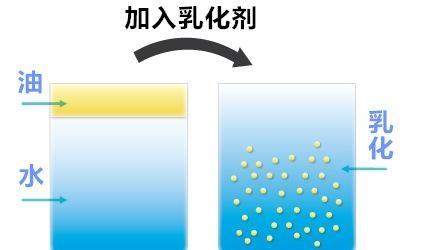Do you know about emulsifiers as food additives? What exactly does it do? The Bread Prince's notes series on rusks in this issue answers your questions!
Emulsification refers to the homogeneous mixing of two or more substances that would not otherwise be mixed together. For example, milk, moisture and fat will be emulsified together by the action of casein in raw milk. Salad dressings are also made by mixing cooking oil with vinegar. Take the lecithin (lipid) contained in the yolk as an emulsifier.

Similar to emulsifiers are surfactants of the detergent ingredient. Interface activators can make it easier to combine oil and water and wash away dirt on the surface of dishes. Emulsifiers and surfactants are also molecules containing lipophilic groups that are easy to bind to oils, and hydrophilic groups that are easy to bind to residual water. It is widely used in food or cosmetics, and can be used as a surfactant of emulsifiers, which is high safety.
Emulsifiers contain many effects. It is used for artificial oils, dairy products, salad dressings, milk drinks, snacks, etc. for the purpose of "emulsifying". It is also used in bread, cakes, ice cream and other products to prevent hardening or as a foaming agent, defoamer.
Synthetic emulsifiers approved as food additives, mostly ethanol and fatty acids of plant origin, artificial esterification products, including fatty acid glycerol, polysorbic anhydride fatty acid, polyethylene stearate and the like. In addition, there are sucrose and fatty acid sucrose esters after esterification of fatty acids. These are almost all chemical synthetics, but the same substances exist in nature, so there is no distinction between natural and artificial.
As for natural emulsifiers, there are milk protein, egg yolk, soy lecithin, and saponin extracted from plants. Many emulsifiers are used in the production of food. Therefore, in addition to soybeans and egg yocithin, which may cause allergies, there are emulsifiers used for the purposes of emulsification, dispersion, wetting, infiltration, defoaming, release, etc., and these substances should be marked on the packaging (food representation) in principle. The problem is that even if there is a label, it is not known what the dosage of the ingredient is, although there have been no studies reporting health hazards caused by emulsifiers.
Therefore, for the emulsifier, the bread prince believes that everyone can pay attention to it, can be discussed, but there is no need to be afraid of it at present, well, the discussion of the emulsifier in this issue is here, the next issue, the bread prince will continue to provide full of dry goods Oh, please keep looking forward to it!